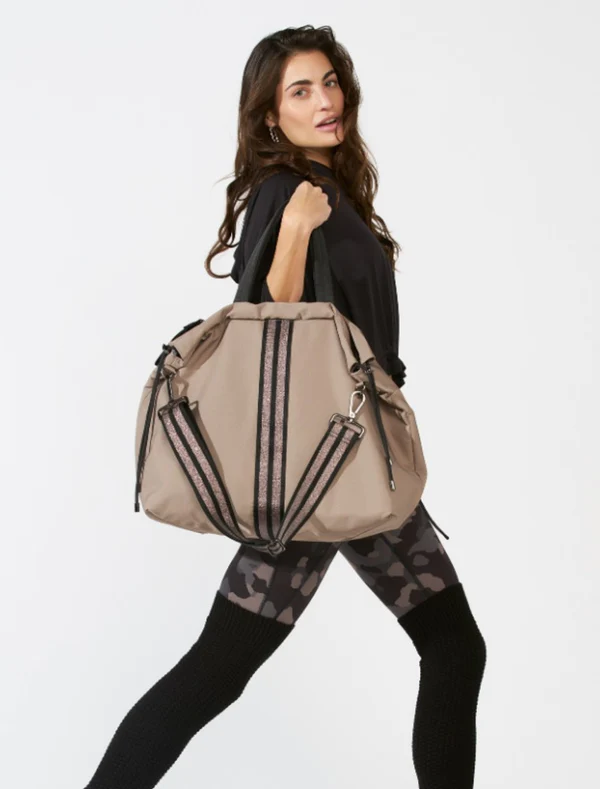Your role as a consumer is where the potential lies. Your actions now will determine if we will have a better tomorrow.
Your role as a consumer is where the potential lies. Your actions now will determine if we will have a better tomorrow.
The consumer has immense power. It may not be immediately visible, but the digital revolution has shifted additional power to the consumer, including more information and more choice. That means the consumer can demand more from brands, and if they want to survive in this digital world, brands have to listen, and fast. The question for the consumer is, how do you wield this power?
With Earth Day approaching on April 22, it’s the perfect time to reflect on our individual impact on the planet. Even though the fashion industry is responsible for creating 92 million tons of clothing waste each year,[1] consumers need to reevaluate their role in abetting the industry to create such waste. Since 2000, the rate at which shoppers purchase clothing has doubled, while the amount of time they wear each item has decreased by 40%.[2]
The Times They Are A-Changin’
Sentiments are starting to change, however. There has been a rise in interest in sustainable practices on behalf of consumers, with 2 in 3 Americans considering eco-friendly materials when shopping for apparel,[3] and 73% of Millennials willing to pay more for sustainable brands.[4] This trend is not limited to Gen Z and Millennials, as consumers of all generations are now more willing to spend extra money on sustainable products.[5] For example, 90% of Gen X consumers today are willing to pay at least 10% more for sustainable products, compared to only 34% two years ago, and their willingness to pay more for sustainable products has increased by 42%.
With the growing interest in sustainability, it's important to consider ways to be more sustainable with your wallet and your habits. Here are seven small, but vital, steps you can take to reduce your environmental impact.

A penny saved is a penny earned
#1 - The first rule of sustainable shopping is to prioritize quality over quantity.[6] By investing in high-quality products, you can reduce your carbon footprint and enjoy longer-lasting, more durable items.
#2 - Invest in trans-seasonal, “Timeless” clothes. Focus on buying versatile items that can be worn throughout the year. Prioritize buying high-quality items that will last and serve you for multiple seasons.
#3 - Buy from sustainable brands. Many are already focusing on sustainable initiatives around the world and with their production methods, so an investment in them is an investment in sustainable practices. Want to learn who they are? You can find them here on our e-shop!
#4 - Buy or sell second-hand. With this practice, you bypass the production stage, which is the most polluting part of the fashion supply chain. Moreover, buying second-hand will extend the lifespan of these items and reduce the waste in landfills.
Small habits, big results
#5 - Repair your clothes. Repairing and mending your clothing can help extend its lifespan, reducing the need to buy new items and minimizing waste. By adopting these practices, you can consume less and make a positive impact on the environment.
#6 - Donate your clothes or organize swap parties. Always remember that even if you don’t need that jacket anymore, someone else does. By doing so, you will be doing a good deed for others and the environment.
#7 - Spread information. It is through word of mouth that we raise awareness about consumers’ responsibilities. So next time you see your stylish friend, (unless that person is you), organize a swap party together and share these tips with others!
These practices require a collective effort to make our home a healthier and more hospitable place. As the ECONYL® brand’s favorite quote from Ryūnosuke Satoro goes: “Individually, we are one drop. Together, we are an ocean.”
References
[1] “10 Stunning Fast Fashion Waste Statistics.” Available at: https://earth.org/statistics-about-fast-fashion-waste/#:~:text=92%20Million%20Tonnes%20of%20Textiles,on%20landfill%20sites%20every%20second
[2] “The trends and trailblazers creating a circular economy for fashion.” Available at: https://ellenmacarthurfoundation.org/articles/the-trends-and-trailblazers-creating-a-circular-economy-for-fashion
[3] “Survey: Consumer Sentiment on Sustainability in Fashion.” Available at: https://www.mckinsey.com/industries/retail/our-insights/survey-consumer-sentiment-on-sustainability-in-fashion
[4] “47 Official Sustainable Fashion Statistics.” Available at: https://theroundup.org/sustainable-fashion-statistics/
[5] “Consumers Demand Sustainable Products And Shopping Formats.” Available at: https://www.forbes.com/sites/gregpetro/2022/03/11/consumers-demand-sustainable-products-and-shopping-formats/?sh=37895c836a06
[6] “The Power of Buying Less by Buying Better.” Available at: https://www.theatlantic.com/business/archive/2016/02/buying-less-by-buying-better/462639/
Author: Giuseppe Scandariato
Join the Club
Step into the loop and unlock exclusive benefits thoughtful insights, and meaningful connections. Live sustainably, repeat intentionally.
Join now!Let your choices reflect your values.
Sale & offers
Exclusive perks and early private access.

The Club





